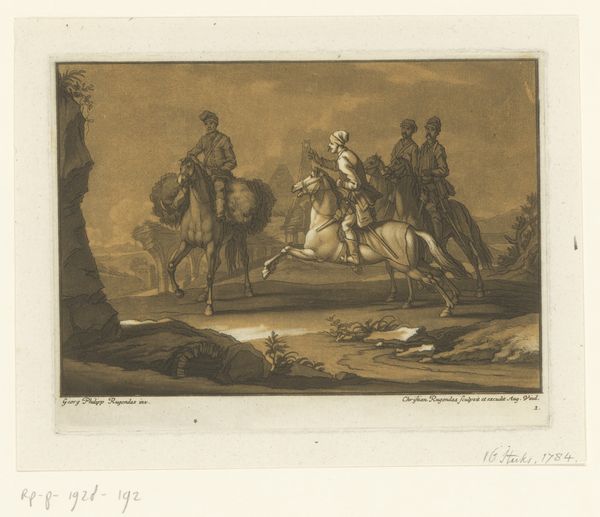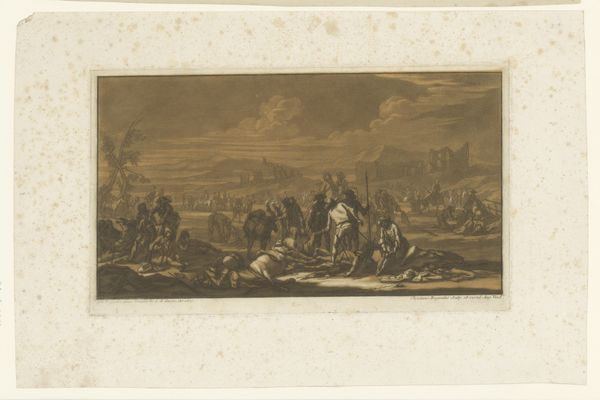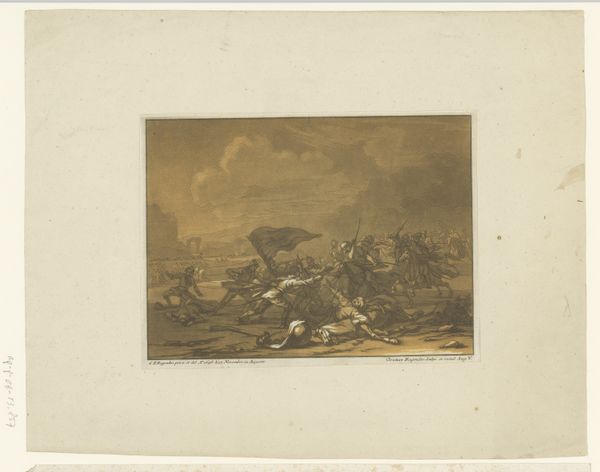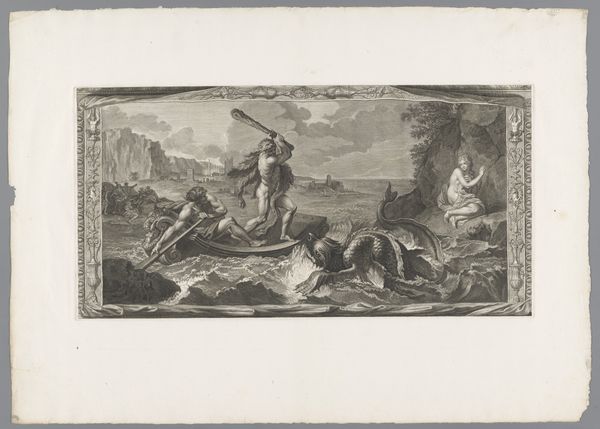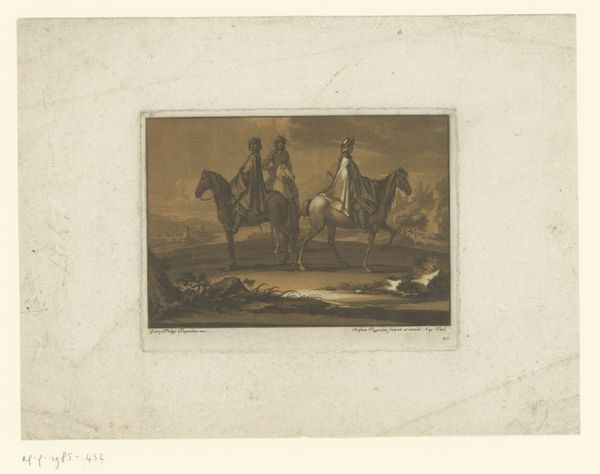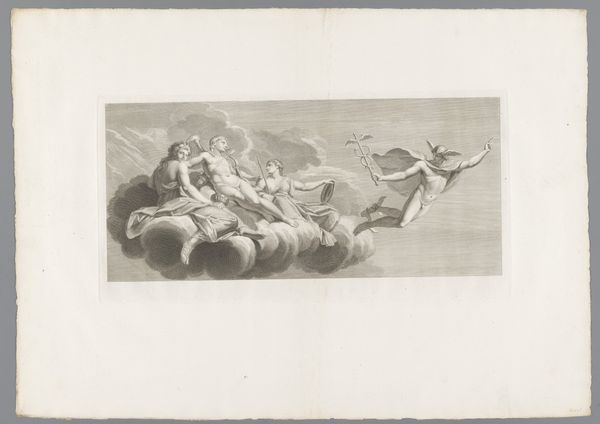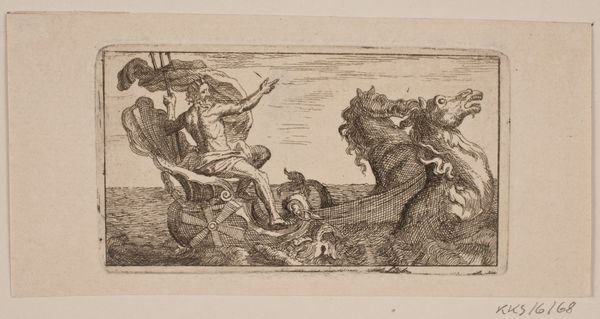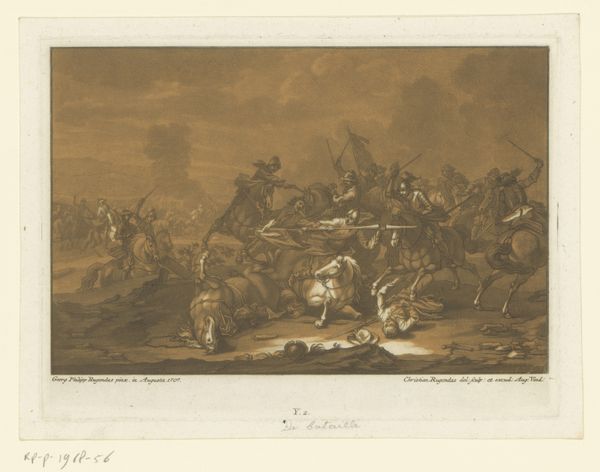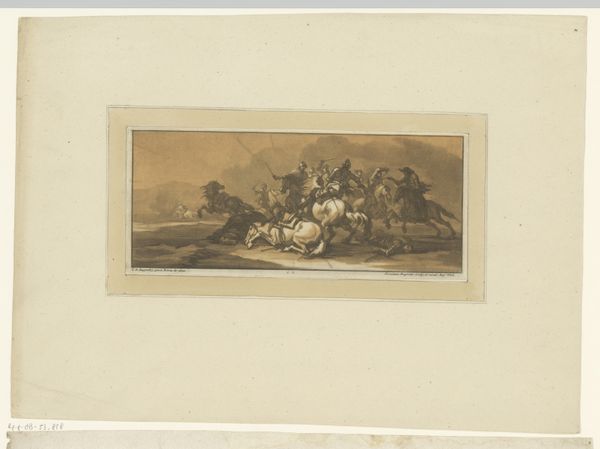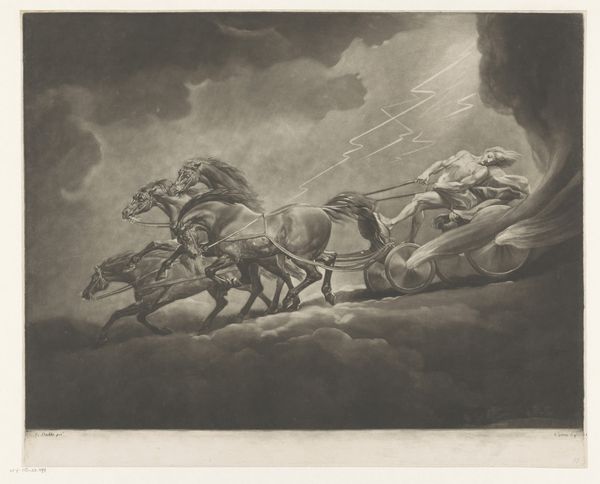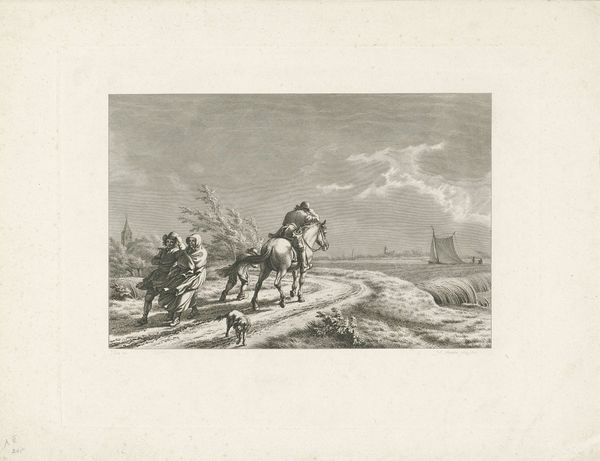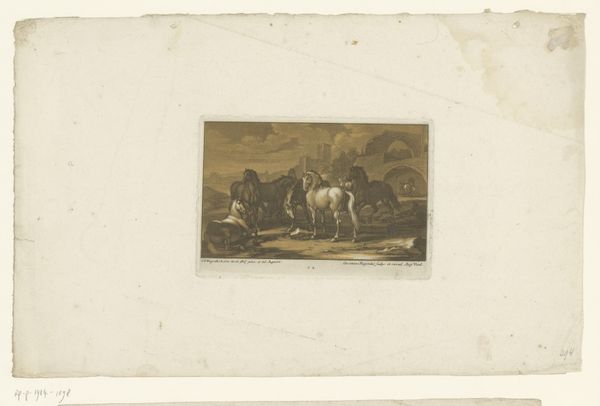
print, metal, engraving
#
baroque
# print
#
metal
#
landscape
#
figuration
#
line
#
history-painting
#
engraving
Dimensions: height 135 mm, width 223 mm
Copyright: Rijks Museum: Open Domain
Curator: Ah, yes. This engraving, “Gevecht tussen ruiters in harnas,” or “Battle Between Armored Horsemen,” is attributed to Christian Rugendas and was created sometime between 1718 and 1781. Editor: The initial impression is of raw dynamism and controlled chaos! I'm drawn to the flurry of movement in contrast to the stillness of the fallen soldier on the ground. Curator: It's intriguing how Rugendas used engraving, a meticulous process, to depict such a frenetic scene. Consider the social function of these images; circulating prints made battle scenes consumable as domestic objects. What statement was the artist making about access, spectatorship, and craft? Editor: Absolutely. Thinking materially, the choice of metal for this print is vital, especially when visualizing conflict and power, like how iron protects soldiers during clashes like this. It adds another layer to this being "history painting," reminding us that conflict always necessitates tools and materials—arms. I think more about that than what historical narrative is represented. Curator: I do, too. But perhaps he’s pointing to the spectacle of conflict. There's a theatrical element—the elevated vantage point, the almost performative quality of the figures in their ornate armor. This to me feels less a document of war and more a stage for observing human drama. And the landscape, it feels almost indifferent. Like the backdrop doesn’t care who wins. Editor: I see your point about the indifference. Though one might argue that a devastated land *is* war's biggest casualty—something very visible in the Baroque landscapes of the time. Curator: It’s interesting how our focus shifts, doesn't it? What seemed initially like a straightforward historical representation unfolds into something more intricate. Editor: Right, and thinking about materiality and how accessible metal prints would be, maybe Rugendas also reflects on conflict's commodification through mass media of his time, in metal as the core resource in weaponry. Food for thought!
Comments
No comments
Be the first to comment and join the conversation on the ultimate creative platform.
